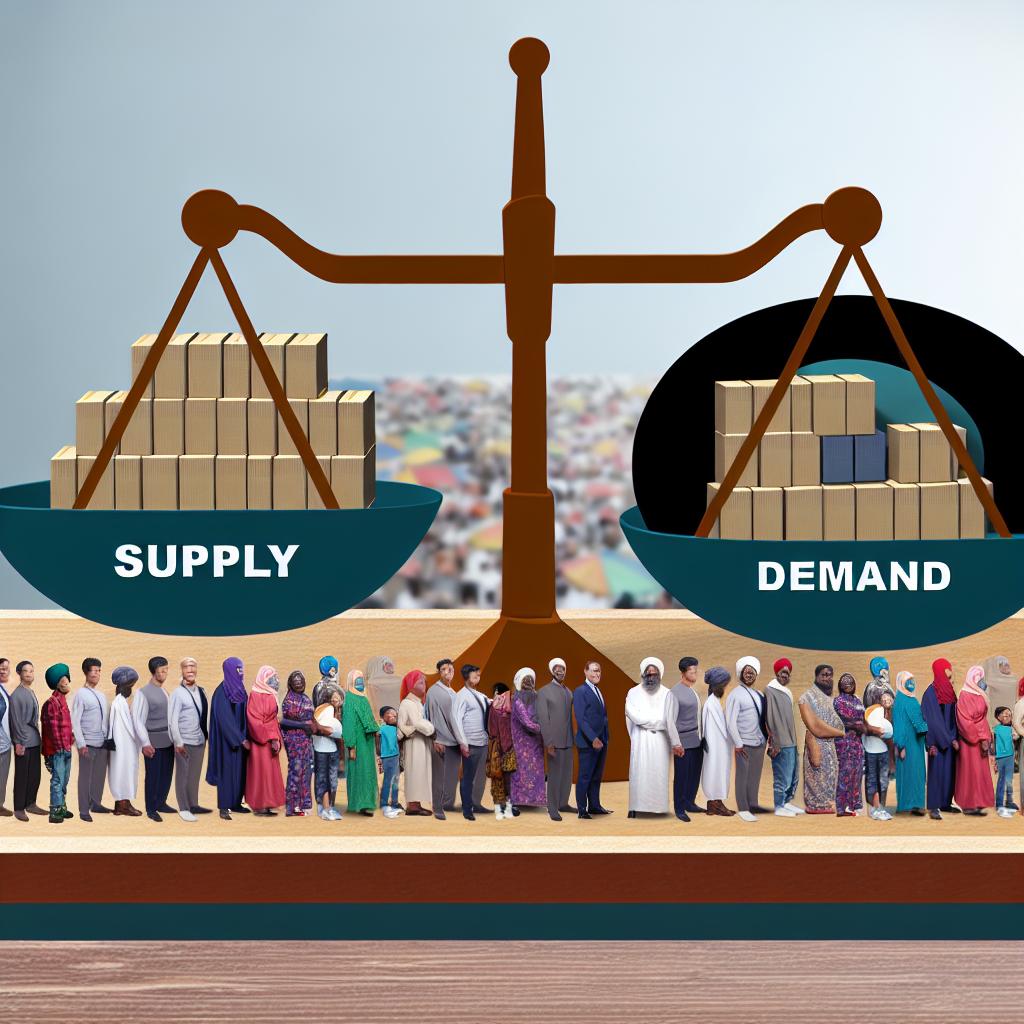Understanding Supply and Demand in Macroeconomics
In macroeconomics, the concepts of supply and demand play a critical role in shaping the economic landscape. At its core, these principles describe the relationship between the availability of goods and services and the desire for them, which ultimately influences both market prices and overall economic activity. Grasping the fundamentals of supply and demand is essential for anyone trying to understand how economies operate and how various factors interrelate within an economic system.
Basic Definitions
To delve deeper, let’s start with some basic definitions. The notion of supply refers to the quantity of goods or services that producers are willing and able to provide for sale at varying price levels over a specified period. Several elements influence supply, including production costs, technological advancements, and the prices of related goods. For example, if the costs of raw materials decrease, producers might supply more of a product at the same price than they would with higher costs.
On the other hand, demand signifies the quantity of goods or services that consumers are willing and able to purchase at different price points over a given time. Several factors affect demand, such as consumer preferences, income levels, and the prices of substitute and complementary goods. For example, a rise in income usually enables consumers to buy more goods, boosting demand for those products.
The Supply and Demand Curve
In economics, the interaction of supply and demand is frequently depicted using a graphical tool known as the supply and demand curve. This graph places price on the vertical axis and quantity on the horizontal axis.
– The demand curve typically slopes downward, reflecting the inverse relationship between price and quantity demanded. As prices decrease, consumers tend to purchase more, increasing the quantity demanded. This negative slope indicates the basic economic principle that price changes tend to result in changes to the quantity demanded.
– Conversely, the supply curve generally slopes upward, demonstrating a direct relationship between price and quantity supplied. Higher prices usually motivate producers to increase their supply, as they can achieve greater profits per unit.
Market Equilibrium
The intersection of the supply and demand curves on this graph represents the market equilibrium. At this point, the quantity of goods supplied is equal to the quantity demanded, establishing an equilibrium price. This equilibrium reflects stability in the market, where the intentions of both buyers and sellers align, resulting in a smooth, efficient operation.
However, changes in factors affecting either supply or demand can cause these curves to shift, leading to a new equilibrium. For instance, if technological innovation reduces production costs, the supply might increase, shifting the supply curve to the right. Conversely, a boost in consumer interest or income could shift the demand curve to the right, implying a greater desire for goods at the same prices.
Shifts in Demand and Supply
The supply and demand curves are not static; they can shift in response to various external changes. These shifts have significant implications for market dynamics and prices.
A demand shift might occur due to changes in consumer income, preferences, or demographic factors like population size. An increase in income enables consumers to purchase more, often shifting the demand curve to the right. Meanwhile, a new trend or heightened preference for a particular good can also cause an increase in demand, promoting a similar shift.
Shifts in supply can arise from factors like technological improvements or variations in input costs. For instance, a breakthrough in production technology can decrease the cost of producing a good, prompting producers to offer more of it at the same price, thus shifting the supply curve to the right. This dynamic could lead to lower market prices for consumers due to the increase in availability.
Implications of Supply and Demand in Macroeconomics
Understanding supply and demand is critical in the macroeconomic context because they form the backbone of economic operations, influencing factors such as inflation, unemployment, and overall economic growth. For instance, an imbalance with high demand but low supply can generate inflationary pressures, where too much money chases too few goods. Conversely, a situation with low demand but high supply can lead to deflation, where prices fall due to excess capacity and insufficient buying activity.
In the realm of macroeconomic policy, appreciating these dynamics aids policymakers in crafting strategies to stabilize the economy. Governments and central banks leverage tools like interest rate adjustments and fiscal policy measures to influence demand levels, seeking to encourage spending during economic slowdowns and to restrain demand and mitigate inflation during periods of economic overheating.
Conclusion
To conclude, the principles of supply and demand are fundamental components of macroeconomic analysis. They offer a structured framework for understanding how diverse factors interconnect within the economic arena, aiding analysts and policymakers alike in predicting shifts and formulating strategies aimed at achieving desired economic goals. Grasping these core concepts allows individuals to construct a more comprehensive understanding of economic dynamics — a critical skill for leaders, economists, and even the informed citizen seeking to navigate the complexities of the economic world. As these principles guide both micro-level decisions of consumers and producers and macro-level policy actions, they highlight the interconnected nature of global economics, emphasizing the need for strategic coordination in managing both national and global economies.
This article was last updated on: April 28, 2025




